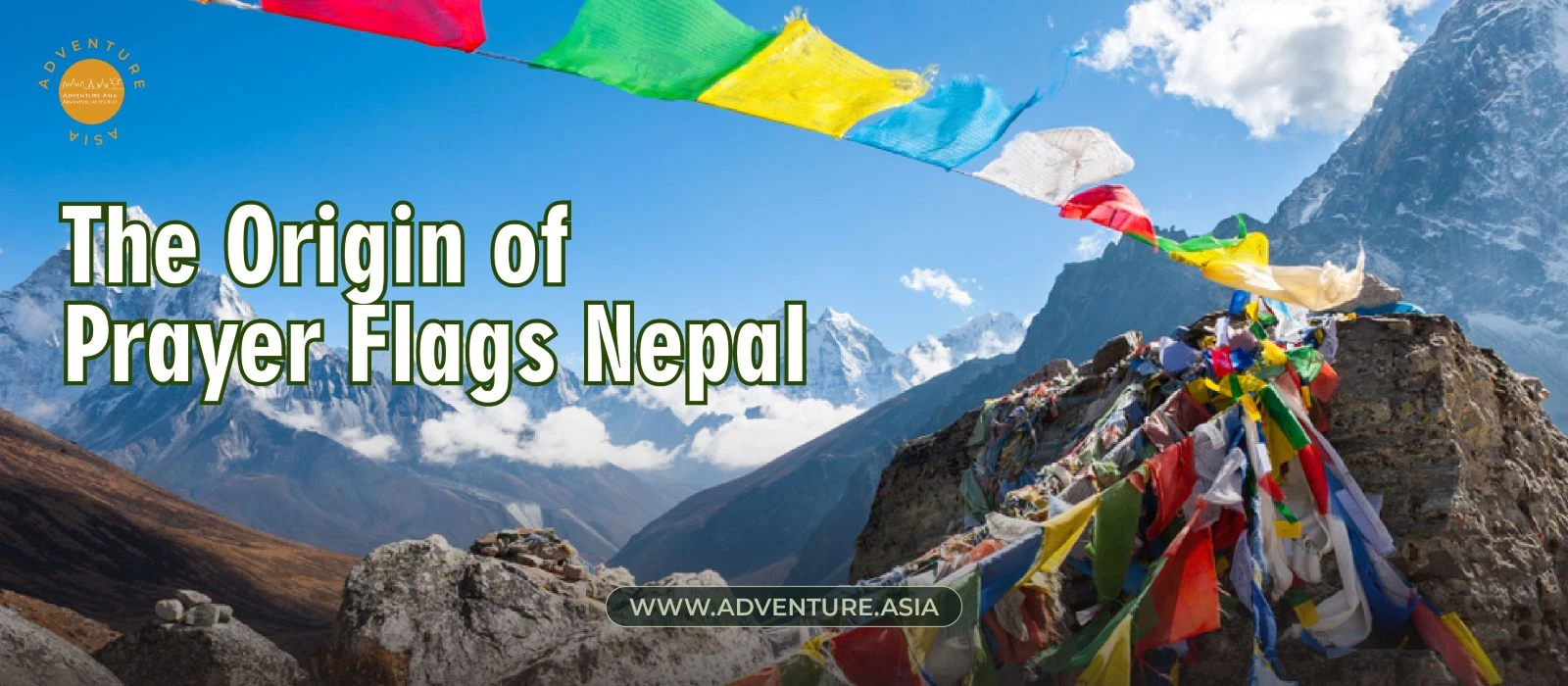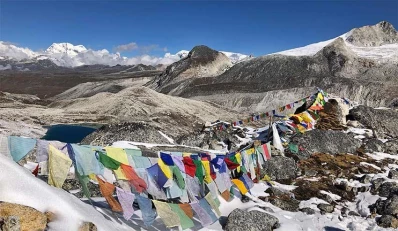
Prayer Flags Nepal: Colorful Messengers of Hope and Harmony
- 1. The Origins and Legends of Prayer Flags in Nepal
- 2. A Symphony of Symbols on Prayer Flags in Nepal
- 3. The Significance of Prayer Flags in Nepal
- 4. Encountering Prayer Flags on Your Nepal Adventure
- 5. The Future of Prayer Flags in Nepal
As you traverse the breathtaking landscapes of Nepal, a vibrant symphony of color catches your eye. Fluttering majestically in the Himalayan breeze are prayer flags, Nepal's ubiquitous symbol of hope, peace, and spiritual connection.
These colorful rectangles, strung along mountain passes, monasteries, and even bustling villages, hold a deep significance within Nepali culture and Tibetan Buddhism. This article delves into the rich history, symbolism, and captivating presence of prayer flags Nepal, enriching your adventure with a deeper understanding of this cherished tradition.
1. The Origins and Legends of Prayer Flags in Nepal
The exact origin of prayer flags remains shrouded in a veil of time. Legends trace their roots back to ancient Tibet, where smoke signals were used to carry prayers to the heavens. Over time, these signals evolved into inscribed cloths hoisted on tall poles, eventually morphing into the prayer flags we see today.

Prayer flags Nepal are deeply intertwined with Tibetan Buddhism. The inscriptions and symbols on the flags often represent mantras - sacred syllables or phrases chanted for spiritual benefit. Common mantras include "Om Mani Padme Hum," a powerful expression of compassion, and the "Lung ta" mantra, symbolizing good fortune and prosperity. Prayer flags come in various types, each with its own purpose. The most recognizable are the rectangular flags with five distinct colors: blue (sky/space), white (air/wind), red (fire), green (earth), and yellow (water).

Traditionally, prayer flags were made from cotton cloth, hand-printed with wooden blocks. Today, a combination of traditional and modern techniques is used, with some flags still crafted from natural materials and others printed on synthetic fabrics.
2. A Symphony of Symbols on Prayer Flags in Nepal
The vibrant colors on prayer flags in Nepal are not merely decorative; they hold profound meaning. Each color represents a vital element of the universe:
Blue: Symbolizes the vastness of the sky and limitless space, offering a sense of peace and tranquility.
White: Represents the air or wind, carrying prayers aloft and disseminating blessings to all beings.
Red: Represents fire, symbolizing purification, transformation, and the burning away of negativity.
Green: Represents the fertile earth, signifying prosperity, growth, and abundance.
Yellow: Represents the life-giving element of water, fostering healing, compassion, and wisdom.
The mantras inscribed on the flags often seek to invoke the qualities associated with these colors, creating a powerful visual and spiritual message. The wind, a crucial element in this tradition, carries the prayers and blessings woven into the flags throughout the land.
3. The Significance of Prayer Flags in Nepal
Prayer flags in Nepal are more than just colorful decorations; they are vibrant expressions of hope, harmony, and good fortune. Villagers hang them near their homes to ward off evil spirits and promote well-being for their families. Hikers and trekkers string them along mountain passes to ensure a safe journey. Monasteries display them as a symbol of peace and compassion, sending positive energy throughout the surrounding environment.

In Nepali culture, prayer flags serve as a bridge between the physical and spiritual realms. The belief is that as the wind carries the flags, it also carries the inscribed prayers and mantras to the heavens, reaching the divine and benefiting all beings.

However, there's a growing concern about the environmental impact of prayer flags. The traditional practice of using natural materials is more sustainable, but with increased tourism, synthetic flags that don't decompose readily are becoming more common. Efforts are underway to promote responsible flag-making practices and encourage the use of biodegradable materials.
4. Encountering Prayer Flags on Your Nepal Adventure
Imagine hiking through the majestic Himalayas, the crisp mountain air invigorating your senses. Suddenly, a vibrant tapestry of prayer flags unfurls before you, fluttering in the wind like a silent choir. This is a quintessential Nepali experience, a chance to witness the profound impact of prayer flags firsthand.
While Nepal trekking, you'll encounter prayer flags at various locations, each with its own cultural significance. The Everest Base Camp trek offers breathtaking views of prayer flags against the backdrop of towering peaks. Along the Annapurna Circuit, prayer flags adorn monasteries nestled amidst picturesque villages. Remember to approach these sacred symbols with respect. Avoid touching them unless specifically invited by locals, and refrain from taking them as souvenirs.

5. The Future of Prayer Flags in Nepal
Prayer flags Nepal remain a vibrant symbol of hope, peace, and the harmonious connection between nature and spirituality. As tourism increases, so does the responsibility to ensure these traditions are preserved for generations to come. Efforts are underway to promote sustainable practices in prayer flag production, encouraging the use of eco-friendly materials and proper disposal methods.
The future of prayer flags in Nepal appears bright. Their significance transcends cultural and religious boundaries, resonating with anyone seeking hope, peace, and a connection to something greater than themselves. Travelers from all corners of the globe are captivated by these vibrant symbols, fostering a deeper understanding of Nepali culture and Buddhist traditions.
Here are some ways the future of prayer flags might unfold:
Sustainable Practices: The use of biodegradable materials and responsible disposal methods will be crucial for minimizing environmental impact.
Educational Initiatives: Educating tourists about the cultural significance of prayer flags and encouraging respectful behavior will ensure their preservation.
Community Involvement: Supporting local artisans who create prayer flags using traditional methods helps sustain the cultural heritage.
Modern Interpretations: Contemporary artists might incorporate prayer flag elements into their work, bridging the gap between tradition and modern expression.
As you embark on your adventure in Nepal, remember that prayer flags are more than just colorful displays. They represent a rich cultural heritage, a deep spiritual connection, and a powerful message of hope for all beings. Let the vibrant tapestry of prayer flags Nepal guide you on your journey, enriching your experience and leaving you with a profound sense of wonder.
>>> More details: Nepal must know before travel
Ready to experience the magic of Nepal firsthand? Adventure Asia curates unforgettable expeditions that blend cultural immersion, breathtaking scenery, and a touch of comfort. Go beyond the typical tourist trail and discover the soul of Nepal with our unique itineraries. Contact us today to craft the perfect adventure for the experienced traveler seeking a deeper connection to this extraordinary land.





















